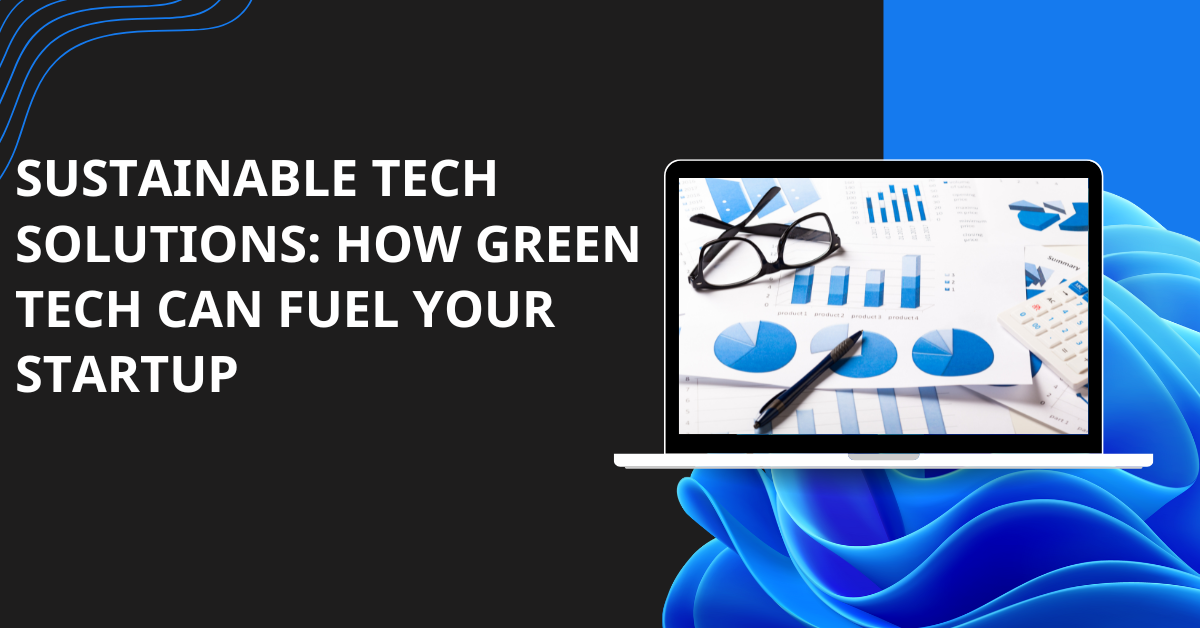How Green Tech Can Fuel Your Startup In 2025, sustainability is no longer optional—it’s a competitive advantage. Whether you’re building a SaaS product, launching an e-commerce brand, or starting a remote-first business, green technology can give your startup the edge it needs to thrive while making a positive impact.
Let’s explore how sustainable tech is shaping the startup ecosystem—and how you can tap into it for growth, funding, and long-term relevance.
Why Sustainability Matters in Tech
Today’s consumers and investors are more environmentally conscious than ever. According to a 2024 survey by NielsenIQ, over 70% of Gen Z customers actively choose eco-conscious brands.
Governments are also offering incentives—tax breaks, grants, and startup support—for businesses that integrate eco-friendly technologies.
By aligning your startup with green values, you’re not only helping the planet—you’re building trust, brand loyalty, and future-proofing your company.
1. Use Cloud Services Powered by Renewable Energy
Your infrastructure matters. Tech giants like Google Cloud, Amazon Web Services (AWS), and Microsoft Azure now offer green data centers powered by solar, wind, or hydro energy.
Tip: Choose providers with a published sustainability policy and commit to carbon neutrality.
Example: Host your app on a green-certified server like GreenGeeks or Google Cloud’s carbon-free regions.
2. Adopt Circular Tech for Hardware
If your startup uses physical tech (like laptops, phones, or IoT devices), choose refurbished, upcycled, or modular hardware.
Companies like Framework and Back Market offer sustainable alternatives to traditional electronics, helping reduce e-waste while saving money.
3. Go Paperless with Digital Tools
Minimize paper waste by digitizing everything—contracts, reports, brainstorming sessions, and feedback. Tools like:
- DocuSign for e-signatures
- Notion or Evernote for team collaboration
- Trello or ClickUp for project tracking
This cuts waste and streamlines operations.
4. Offset Your Carbon Footprint
Even digital businesses leave a footprint—especially with server usage, travel, and shipping.
Startups can subscribe to carbon offset services like:
- Cloverly or Pachama for automated carbon tracking
- Ecologi to plant trees and support reforestation projects
You can even display your carbon-neutral status on your site—boosting brand image.
5. Build Products That Promote Sustainability
Think beyond backend tools. Ask: Can your startup directly solve an environmental problem?
Examples:
- A platform that tracks food waste in restaurants
- An AI tool for optimizing energy use in buildings
- A marketplace for renting or recycling electronics
Eco-startups are attracting major VC interest—and customer love.
6. Work with a Remote-First, Minimal Footprint Culture
Reduce energy use by running a remote-first business. This cuts office-related emissions (lighting, AC, commuting) and is often cheaper for bootstrapped startups.
Tools like Zoom, Slack, and Loom keep teams connected without needing a physical footprint.
Final Thoughts
Sustainability isn’t just a buzzword—it’s a business model. Startups that embrace green tech aren’t just protecting the planet—they’re attracting better talent, winning conscious customers, and future-proofing their ventures.
In 2025, the most successful startups won’t just be the fastest or the cheapest. They’ll be the smartest—and the greenest.
